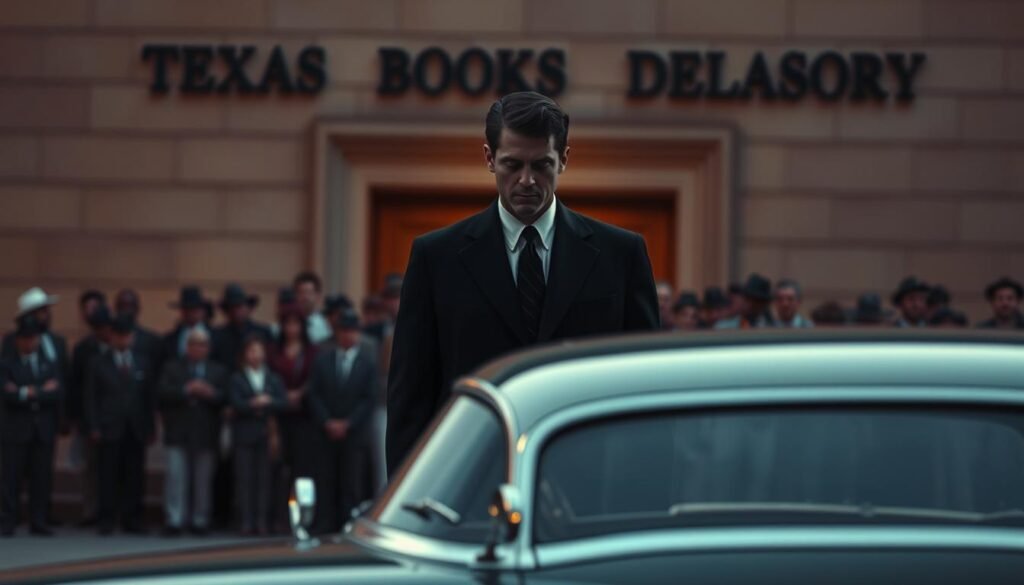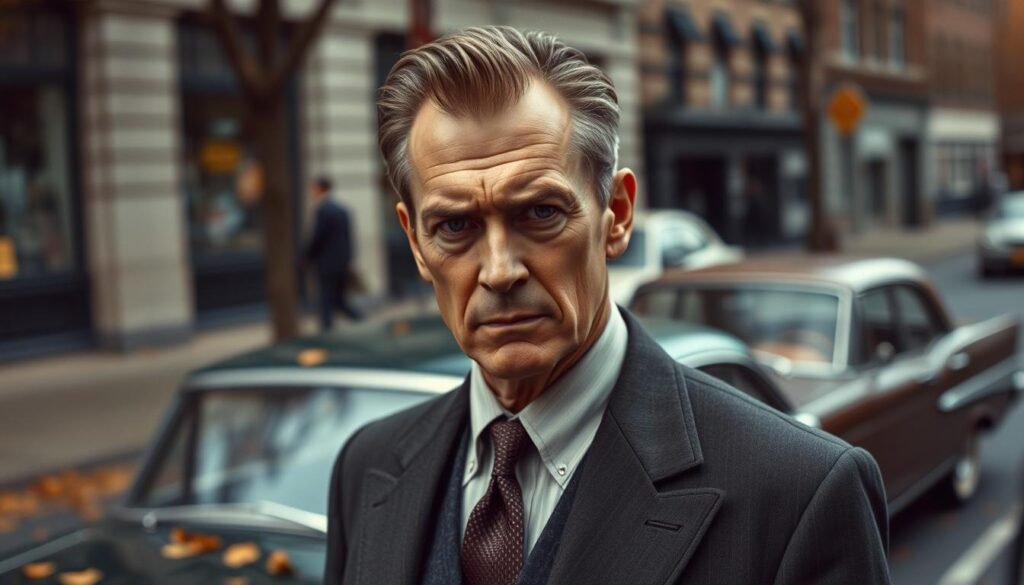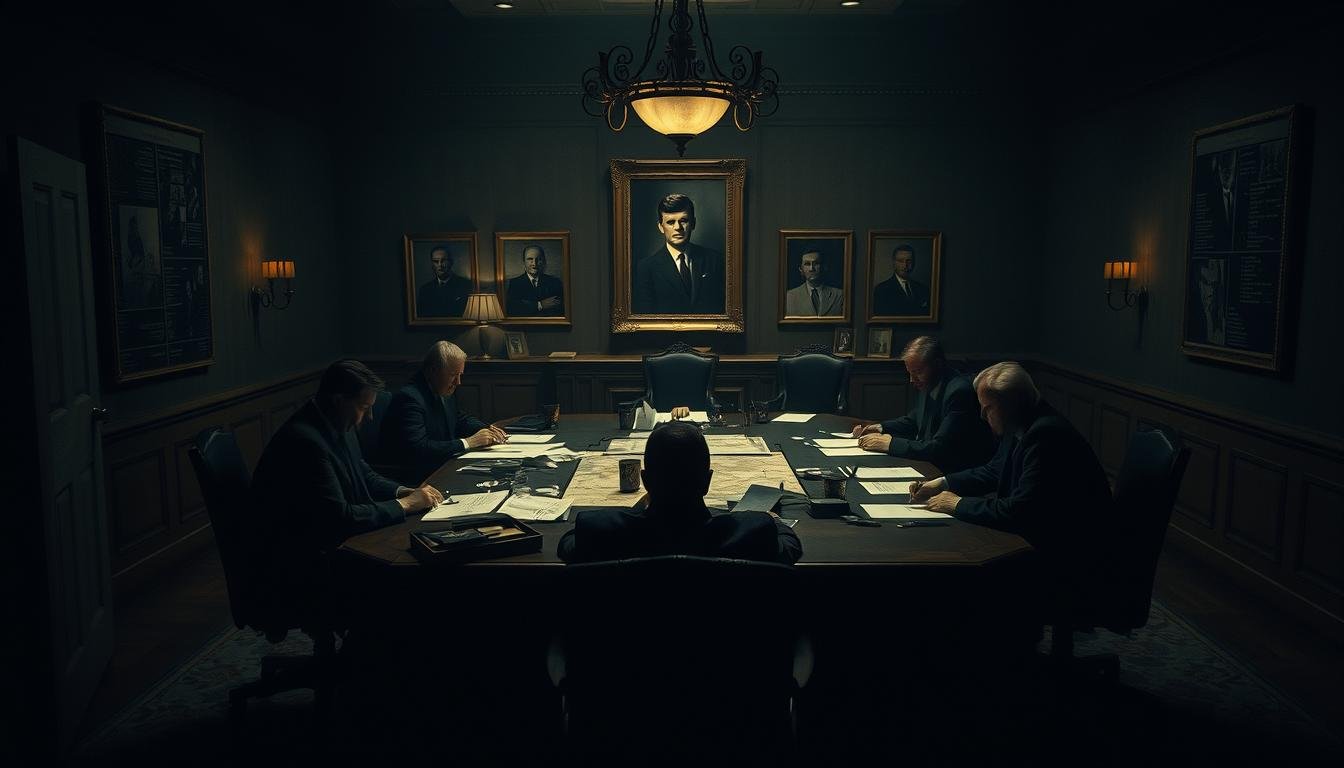The plot to kill John F. Kennedy has been looked at a lot. While the successful attempt on November 22, 1963, changed the nation deeply, an earlier plot failed. This earlier plot happened on December 11, 1960. Brad Meltzer’s book, “The JFK Conspiracy,” dives into this failed attempt. It explores why the plan to kill Kennedy did not work. It also looks into Kennedy conspiracy theories.
The book looks at Richard Pavlick, a 73-year-old man, who wanted to kill Kennedy. Pavlick was a retired postal worker from New Hampshire. He also had a history of mental illness. He planned to kill Kennedy just weeks after Kennedy won the election.
What made Pavlick want to do it? How were his plans stopped? Meltzer’s book connects these questions. It adds suspense and historical interest to the attempt on Kennedy’s life.
“The JFK Conspiracy” talks about Pavlick’s dangerous plan. But it also starts a bigger discussion about Kennedy conspiracy theories. It shows how important the Secret Service was. Lucky events stopped the plan. These events let Kennedy be president until his tragic death in Dallas three years later.
Introduction to “The JFK Conspiracy”

Brad Meltzer’s book, “The JFK Conspiracy,” is a fascinating look at a major historic event. He looks closely at all the Kennedy assassination theories that people have thought of since 1963. His writing is interesting and full of important details about the JFK assassination controversy.
The Warren Commission said Lee Harvey Oswald was the only one involved. But many people don’t believe this. A 2023 YouGov poll showed that 54% think Oswald had help. There are between 1,000 to 2,000 books that also think it was a conspiracy. This shows that a lot of people doubt what the officials say.
Meltzer’s book doesn’t just talk about well-known theories. It also looks at important people and groups that might have been part of the plan. He talks about Clay Shaw’s trial and the 1979 House Select Committee on Assassinations. They thought more than one person might have been shooting.
Meltzer uses things like the Zapruder film to make things clearer. He also talks about how people’s beliefs in Kennedy assassination theories have changed from 1963 until now. Right after the assassination, 62% believed in a conspiracy. This belief has gone up and down but always stayed strong.
“The JFK Conspiracy” is a big addition to studies about Kennedy. It’s a must-read for anyone who wants to know about the different theories and ongoing questions. Meltzer’s detailed research and interesting writing give readers a deep and varied look at the JFK conspiracy.
Claim Your FREE Copy of “The JFK Conspiracy” Here.
Profile of Richard Pavlick: The Would-Be Assassin
Richard Pavlick was born in 1887. He tried to kill John F. Kennedy in December 1960 but failed. Pavlick was 73 at the time, showing he had long hated Kennedy. He didn’t like Kennedy and was very against Catholics. This kind of hate was also seen in groups like the Ku Klux Klan back then. Pavlick’s story was not well-known until a documentary called “The JFK Conspiracy” talked about it.

Background and Motives
Richard Pavlick wanted to stop Kennedy from becoming president because of his own beliefs. Kennedy barely won against Nixon in 1960, making Pavlick even more determined. He bought eight sticks of dynamite to use in his plan, believing Kennedy would be bad for the U.S.
The Travel and Stalking of Kennedy
Pavlick followed Kennedy across many states, watching his every move. He finally reached Palm Beach, Florida, with dynamite to kill Kennedy. But he got caught by the police on December 15, 1960. He was put in a mental hospital soon after, on January 27, 1961, and stayed there for nearly six years.
The Secret Service caught Pavlick just in time. They say it was their closest call ever. If Pavlick had succeeded, Kennedy would never have given his famous speech asking Americans to think of what they can do for their country. The story of Kennedy’s life and death is full of conspiracy theories, making it very complex. Richard Pavlick is part of this big story.
Claim Your FREE Copy of “The JFK Conspiracy” Here.
JFK’s Life Leading Up to the Assassination Attempt
Before looking into the John F. Kennedy conspiracy and JFK assassination cover-up, let’s see JFK’s earlier life. John F. Kennedy, known as Jack, was born into a big, political family. Being the second oldest of nine, he lived in comfort but also knew challenge and perseverance.
Early Life and Political Rise
John F. Kennedy started his political journey after being a war hero in World War II. He was elected to the U.S. House of Representatives in 1946. Then he became a Senator in 1953. Kennedy’s charm and hard work made him quickly popular in politics. Despite many health issues and sad events, Kennedy’s strong will led him to become president in 1960.
His time as president saw big events like the Cuban Missile Crisis, showing his skill in diplomacy, and efforts for civil rights. His leadership stood out amid a time full of tension and conspiracy theories. The idea of a John F. Kennedy conspiracy got attention especially because of the Cold War’s secret and doubtful actions.
Personal Life During the Attempt
JFK’s life as president was full of public success and private struggles. He and Jacqueline Kennedy were seen as symbols of American style and class, like a modern Camelot. But, JFK also faced many dangers quietly. The famous JFK assassination cover-up adds more to his last days.
When the assassination try happened, JFK had his loved ones around him. He was shot in a car with his wife, Jackie, and Texas Governor John Connally. His death on November 22, 1963, at 12:30 PM shocked everyone. After that, many conspiracy theories grew, sometimes hiding the true JFK—his leadership, dreams, and kindness.
The Role of the Secret Service
On November 22, 1963, the try to hurt President John F. Kennedy shook America. People have looked closely at the Secret Service’s actions that day. They’ve especially focused on the many conspiracy theories surrounding JFK assassination.
That day in Dallas, the Secret Service was very alert. Clint Hill showed great bravery. He jumped onto the presidential car to protect the First Lady. His actions showed how ready the agents were to respond.
After the sad event, people had many questions about the Secret Service. Some JFK conspiracy theories debunked suggested they didn’t do their jobs well. The Warren Commission said there were some mistakes, but nothing big. They said the agency should have checked buildings before.
The U.S. House said the Secret Service didn’t do everything right. They said there was a break in how they keep people safe.
On that day, not enough police motorcycles were used. This was different from a trip in Houston. Also, they didn’t look into threats well enough, like two warnings they got. These mistakes led to many conspiracy theories surrounding JFK assassination.
Even though many JFK conspiracy theories debunked, these events show it was a complex situation. They point out both good and bad in how the Secret Service tried to protect Kennedy.
“The JFK Conspiracy”: A Page-Turner of History
Brad Meltzer’s book, “The JFK Conspiracy,” gets high praise. It combines real facts with a fun story. Meltzer takes us deep into the JFK mystery, clearing up some false theories too.
Reviews and Reception
People love “The JFK Conspiracy.” Critics and readers admire how Meltzer sorts through complex theories. They like how he gives new views on events and the Secret Service’s role.
“Brad Meltzer’s depiction of historical events serves as both an educational experience and a captivating read. His work on ‘The JFK Conspiracy’ is a testament to his dedication to unearthing the truth behind one of America’s most debated moments.” – The New York Times
Meltzer’s book is a solid guide in the mess of JFK theories. It brings the 1960s to life for readers.
Narrative Style and Structure
His storytelling in “The JFK Conspiracy“ is detailed and gripping. He mixes real facts with storytelling. His profiles and historical details balance the book well.
Meltzer uses a great narrative style. It pulls us into the 1960s political scene. The book is both fun and educational.
“Meltzer’s writing stands out for its ability to humanize historical figures while maintaining a keen eye on accuracy and detail.” – The Washington Post
To sum up, Brad Meltzer makes history exact and friendly. “The JFK Conspiracy” is great for all who want to explore JFK’s story.
Claim Your FREE Copy of “The JFK Conspiracy” Here.
The Larger Impact of Kennedy Assassination Theories
In the early 1960s, about 75% of Americans trusted the federal government. But over time, this trust went down a lot. Now, nearly 75% of Americans don’t trust the federal government. This change is largely due to “Kennedy assassination theories” and the “JFK assassination cover-up” story. Many believe there is more to the assassination than the government says.
By the 1990s, distrust in government transparency was very high. Almost 80% of Americans didn’t believe the lone gunman story. Today, about 65% still doubt the official assassination accounts. This shows a bigger trend of distrust and belief in conspiracy theories.
“Despite the release of five million pages of official documents under the JFK Assassination Records Act, distrust persists, and many records remain withheld,” noted scholars.
New information and ongoing secrets have sparked people’s imaginations. About 65% think JFK’s death was part of a conspiracy. Only 29% believe Lee Harvey Oswald acted alone. In the last ten years, more people suspect the U.S. government was involved, growing from 13% to 20%. Belief in CIA and FBI involvement also went up.
The impact of *Kennedy assassination theories* goes beyond just interest in history. They also influence political views and how people see government responsibility. For example, 71% of Republicans, 55% of Democrats, and 68% of independents believe in a conspiracy. This skepticism affects voting and civic involvement.
Different education levels show varied beliefs. 51% of people with postgraduate degrees support the lone gunman theory. But 57% of college graduates think it was a conspiracy. These different views show how widespread these theories are across society.
The “JFK assassination cover-up” and related theories still impact Americans deeply. They have shaped how people talk about trust, transparency, and government accountability.
Conclusion
Looking into The JFK Conspiracy, we find a mix of history, confusion, and planned actions. This surrounds the failed try to kill President John F. Kennedy. We see the importance of people like Richard Pavlick and the Secret Service’s efforts. Also, the impact of the many theories about the conspiracy is explored.
We learn why the JFK killing plan didn’t work by looking into JFK’s life before the try. The Secret Service’s careful plans are examined. Also, the complex story that Meltzer’s book tells is discussed. This ongoing interest in the truth shows our curiosity and the unanswered questions we have.
In The JFK Conspiracy, Brad Meltzer gives us a deep look at this event. His book adds greatly to what we know. As new documents come out, we get more info on the case. This keeps the story of JFK’s assassination alive and important.

